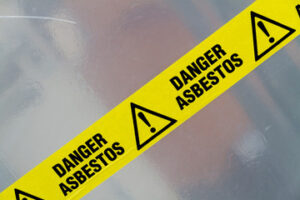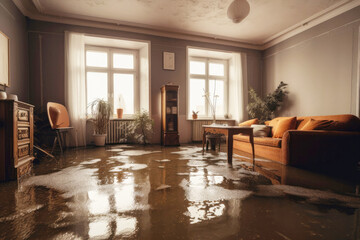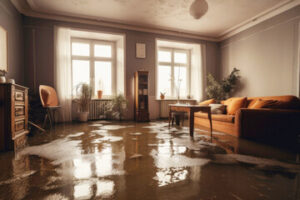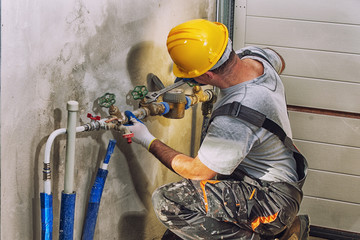Thousands of people die every year from mesothelioma and other asbestos-related illnesses. Many of these victims were exposed to asbestos in their workplaces without knowing the dangers.
Asbestos Perth\ is a naturally occurring fibrous silicate mineral. It comes in six types of fibers. The first family, amphiboles, includes crocidolite, anthophyllite, actinolite, and tremolite. The second family, serpentine minerals, includes chrysotile.

Asbestos is a group of naturally occurring minerals that form long, thin and strong fibers. It is resistant to heat and corrosion, making it a popular material in construction products and industrial applications. However, asbestos has been linked to health problems such as mesothelioma. Asbestos is found in rock deposits around the world, including the It can be found in a variety of products, such as insulation, cement and some floor tiles. It has also been used as a fire retardant and in shipbuilding, automobile brakes and clutches.
People are exposed to asbestos by breathing in tiny asbestos fibers that get into the air when natural or man-made asbestos materials are damaged, disturbed or removed unsafely. The most common type of asbestos is chrysotile. Other types include amosite, crocidolite and anthophyllite. All forms of asbestos are dangerous if inhaled, but some types are more dangerous than others.
Asbestos-related illnesses range from pleural plaques to deadly cancers, including mesothelioma. Despite the health risks, asbestos is still mined in some countries and used in certain industries. Companies that knew the dangers of asbestos but didn’t warn workers should be held responsible for the injuries they caused.
Although mining asbestos is banned in the some older homes and buildings may contain it. Many of these products were made before the ban and are often found in building materials, such as insulation and some floor tiles. Asbestos is also found in vermiculite-containing garden products and some talcum powder.
Workers are most at risk for exposure to asbestos during renovation, repair and demolition work. They are also at risk when tearing down or removing asbestos-containing insulation, paints and coatings, putting them through an autoclave or disposing of the products. Other high-risk occupations are plumbers, electricians and professional auto mechanics who handle or install asbestos shingles, pipe coverings, insulators and other roofing materials.
Asbestos should only be handled by a trained and accredited asbestos abatement professional. Asbestos should never be scraped, drilled, or broken up because it can release the fibers into the air. If you suspect you have asbestos in your home, patch the area with duct tape to prevent fibers from being released. Then, send a sample to an asbestos analysis laboratory that is accredited by the National Voluntary Laboratory Accreditation Program at the National Institute of Standards and Technology.
Asbestos is a naturally occurring fibrous silicate mineral. It has unique chemical and physical properties that make it ideal for use in a variety of products and building materials. These properties include heat resistance, tensile strength, and thermal stability. In addition, asbestos is non-flammable and has low electrical conductivity. These characteristics contributed to the popularity of asbestos in the 20th century, especially during World War II and the building boom that followed. Despite these advantages, asbestos has been found to be harmful to human health and can cause several diseases, including lung cancer, mesothelioma, and other respiratory issues.
Asbestos consists of six different minerals, and each mineral has a distinct chemical composition. The tetrahedra in these minerals are bonded with magnesium, iron, calcium, aluminum, and sodium. Each mineral is also a source of unique fibers, which can be woven together to make different types of products. The length of these fibers is used to determine the best application. Longer fibers are used for textiles and thermal insulation; medium-length fibers are used for asbestos cement pipe and sheet, friction materials (e.g., brake pads and linings), coatings, and compounds; and short fibers are used for gaskets and millboard (ATSDR, 2001).
When exposed to the air, asbestos breaks down into tiny, microscopic fibers that can easily be inhaled. These fibers enter the body through the respiratory tract and lodge deep in the lungs. This can lead to numerous health problems, including mesothelioma and asbestosis, which can cause chronic, painful symptoms.
The dangers of asbestos were first recognized in the late 1970s, when people began filing lawsuits against companies that used the product. Since then, the EPA has banned the manufacture of multiple types of asbestos, but buildings built before these protections were in place may still contain some of this toxic material. Older roofing and siding shingles, furnace and boiler flue liners, asbestos-cement sheets and patching compounds may release asbestos if they are sanded, scraped or drilled.
People in the construction, manufacturing, and energy industries are most at risk for exposure to asbestos. However, any person who handles older home products like flooring and ceiling tiles may be at risk for exposure to asbestos. Do-it-yourselfers who perform repairs on older homes or auto mechanics who work on older car parts are at risk as well. Many imported asbestos-containing products are still on the market today, including joint compound, paint, and automotive brake pads and clutch liners.
Asbestos is a mineral with unique physical and chemical properties that make it resistant to heat, fire, and many chemicals. It is also lightweight, strong, and insulating. These properties led to its extensive use in building and construction, especially during the industrial revolution and World War II. The asbestos industry was booming until the mid-1970s, when lawsuits against manufacturers were filed by victims suffering from mesothelioma and other asbestos-related illnesses.
The most common asbestos-related diseases are lung cancer, mesothelioma, and asbestosis. These illnesses can be caused by inhaling tiny fibers of the mineral that get into the lungs and remain there permanently, leading to the development of pleural effusions (fluid buildup between the chest wall and lungs), scarring, or lung tissue damage. The symptoms of these illnesses can take decades to appear, making them difficult to diagnose.
People get exposed to asbestos by working with or near products that contain the mineral, such as cement, insulation, and fireproof fabrics. These products are often disturbed during the course of installation, repairs, and demolition work, which can release microscopic asbestos fibers into the air. People who are at risk for exposure include construction workers and military veterans. Other at-risk groups include plumbers and electricians, who are exposed to asbestos pipes and insulation; do-it-yourself auto mechanics who handle aftermarket brake pads and clutch linings; and vermiculite and some talc-containing garden products.
Asbestos has been used in a variety of consumer and industrial products, including gaskets, paint, flooring tiles, and ceiling and wall insulation. Its insulating and fire-resistant qualities made it ideal for construction, shipbuilding, and auto manufacturing. It was also a popular ingredient in textiles, such as blankets and firefighter suits.
While asbestos use is now banned in most countries, it is still found in some consumer and commercial goods. These include asbestos-cement roofing and siding, and shingles. Several older household appliances may also contain asbestos, including gas stoves, furnace ducts, and fireplace boards. These consumer products may not be dangerous unless they are damaged or disturbed, but they can release asbestos fibers into the air when sawed, scraped, or sanded.
Asbestos is a group of six minerals that occur naturally in the earth. Its unique chemical and physical properties made it useful in construction and manufacturing. It was strong, flexible and resistant to fire, electricity, chemicals and heat. It also was cheap and readily available. It was used in home and commercial construction materials, auto parts and textiles. However, asbestos has been linked to a number of health problems, including cancer and lung disease. Symptoms of asbestos-related diseases usually do not appear until many years after exposure.
People are exposed to asbestos when products containing the mineral are disturbed or damaged. When these materials break apart, they release tiny fibers into the air, which are easily breathed in. The lungs can’t process these fibers, and they can become trapped in the lungs. Over time, this can lead to scarring and inflammation, which can affect breathing. The most serious health problems caused by asbestos are mesothelioma, lung cancer and other respiratory conditions.
Occupational exposure is the most common way that people get exposed to asbestos. It is commonly found in the workplaces of plumbers, electricians and industrial workers. It is also present in older homes, where it was used for insulation and fire-retardant materials. In addition, asbestos was used in the manufacture of automotive brake pads and clutches. Do-it-yourself home auto mechanics also face the risk of asbestos exposure when working on old cars.
The sanding, scraping or drilling of asbestos-containing products releases dust into the air. It is also released during demolition work, home and building maintenance or repair, and remodeling. During the 2001 terrorist attack on the World Trade Center, tons of pulverized asbestos was released into the air. Many rescue, recovery and cleanup workers have developed respiratory problems.
There are two types of asbestos: friable and non-friable. Friable asbestos can be crumbled by hand, and it is the most dangerous type of asbestos. It can be bonded or coated with cement to make it less hazardous, but it can still release fibers. Non-friable asbestos is sturdier and poses less of a threat, but it can become friable over time or when it is damaged.




